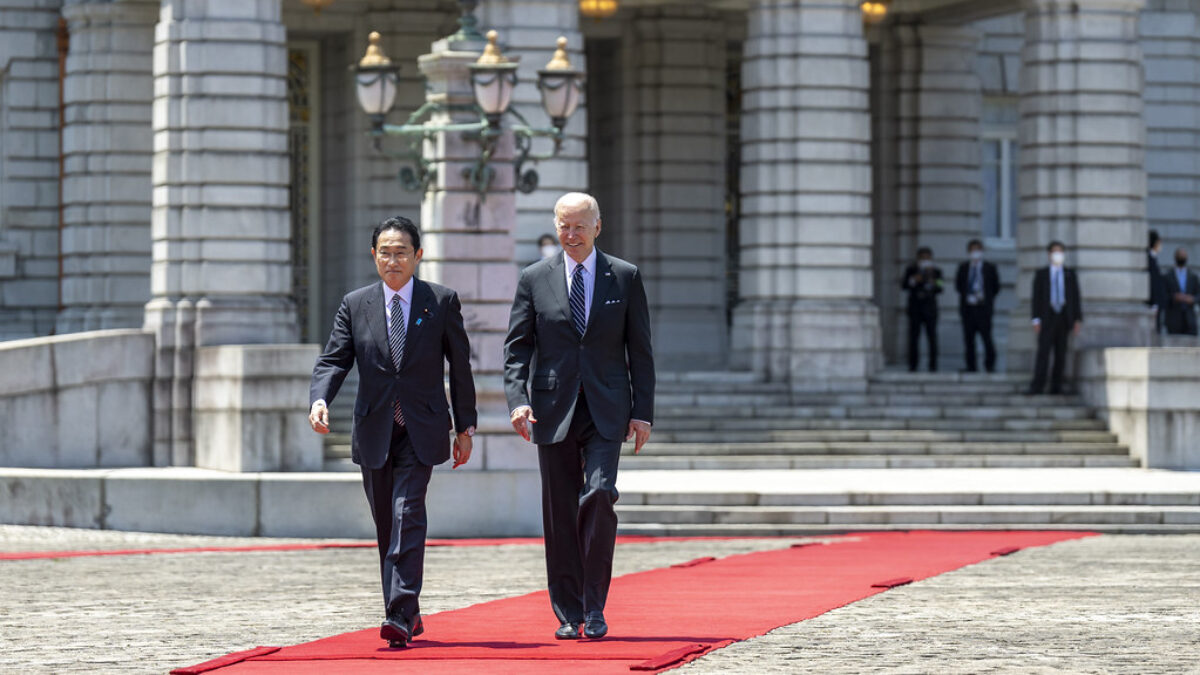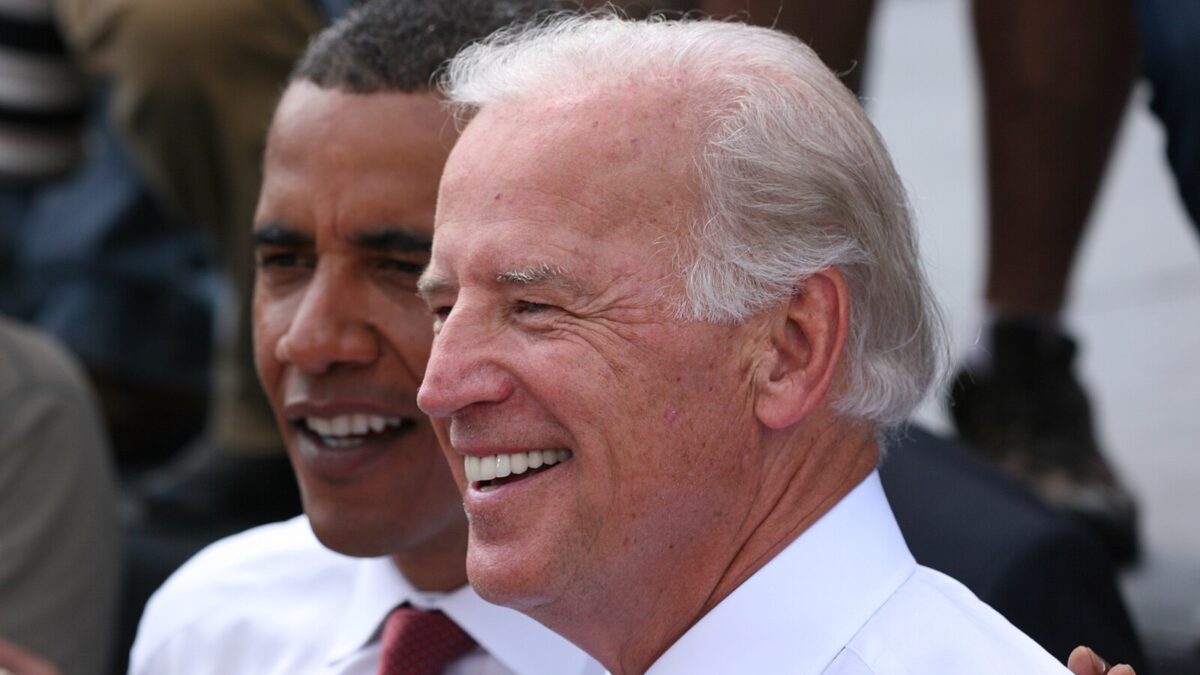When asked point blank by “60 Minutes’s” Scott Pelley if the United States would come to Taiwan’s aid should China invade, President Joe Biden responded with a clear and firm answer.
Pelley: So unlike Ukraine, to be clear sir, U.S. forces, U.S. men and women, would defend Taiwan in the event of a Chinese invasion?
President Biden: Yes.
However, before the interview even made it to air, an unnamed White House official contradicted the president, saying that U.S. policy had not changed, meaning that the U.S. makes no official declaration of whether it would come to Taiwan’s aid if China decided to invade. This policy is known as strategic ambiguity.
Were this the first instance of Biden pledging to come to Taiwan’s aid only to be rebuked by his own White House, it might be making more headlines. Alas, this isn’t the first time Biden has made such a promise. In fact, this whole dance between Biden and his officials has become somewhat of a pattern.
In October 2021 and May 2022, Biden made similar remarks, only to be rebuked by the White House both times. The latter declaration was all the more awkward considering it was made by Biden at a joint press conference with Japanese Prime Minister Fumio Kishida.
When asked if the U.S. was prepared to defend Taiwan, standing next to Kishida, Biden answered, “Yes, that’s the commitment we made.” He continued:
We support the One China Policy, but that does not mean that China has the ability — excuse me — the jurisdiction to go in and use force to take over Taiwan. So, we stand firmly with Japan and with other nations not to let that happen.
The first issue with this statement that should be noted is that Japan itself has no official policy on how it would act if China were to invade Taiwan. Though Japan has recently been more prone to expressing pro-Taiwan sentiment, there is no official alliance between Tokyo and Taipei.
The ‘One China Policy’ Fallacy
Aside from putting Kishida in an awkward position, Biden’s entire answer was drenched in contradiction.
To support the “One China Policy” means to maintain that Taiwan is nothing more than a part of China and that the rightful government resides in Beijing, not Taipei. So, if this is the case, why would China not have the right to use force to take over Taiwan?
Consider Hawaii. If officials in Honolulu decided to reject Washington and elect their own autonomous government, would the U.S. not have the authority to use force to solve the problem?
Of course, it’s not just Biden’s statement on the “One China Policy” that makes no sense. The policy itself is a Cold War-era relic that was never meant to make sense in the first place.
The “One China Policy” was enacted in 1979 when the Carter administration switched diplomatic recognition from the Republic of China (ROC) government in Taipei to the People’s Republic of China (PRC) in Beijing. The reasoning for the decision was both political and economic.
Politically, the Carter administration intended to form closer ties with Beijing to essentially encircle the Soviet Union and exert further pressure on the Kremlin. Given that 1979 was right in the middle of the Sino-Soviet split, Washington and Beijing shared the same fears when it came to the Soviet Union, so an official partnership made pragmatic sense.
Carter also wanted to expand opportunities for American business in China, given the massive market potential China represented. Furthermore, closer economic integration with Beijing, as policy modernization theory predicts, would eventually transform China into a capitalist liberal democracy.
The “One China Policy” served as a means to both of these ends. Washington would pretend Taiwan was part of China, without officially recognizing that Beijing has sovereignty over the island. Try as the experts might to make sense of this agreement, it just doesn’t. Washington and Beijing both knew that, but logical language wasn’t the priority at the time.
Fast forward 43 years, and both the preconditions for implementing the “One China Policy” no longer exist, at least to the extent that they necessitate the maintenance of such an incoherent and potentially destructive policy. Russia is no longer the geopolitical threat it once was, as evidenced by its amateur efforts in taking over Ukraine. And even if Russia was a juggernaut, it is as close to a staunch ally as China has, so that removes any notion that Washington might be able to use friendly relations with Beijing to influence the Kremlin.
As far as the economic portion of the equation, the U.S. is already actively seeking to decrease dependence on the Chinese market, and any pipe dream policymakers had that China would eventually moderate toward a liberal democracy have been firmly put to bed. Unless those same geniuses consider genocide, religious persecution, and locking millions of citizens in their own apartments to be moderate measures.
Whether or not switching diplomatic recognition from the ROC to the PRC in 1979 was a good idea is debatable. What’s not debatable is that preconditions for doing so in the first place no longer exist. This not only renders the “One China Policy” illogical but impractical, as well.
Understanding then, that the “One China Policy” is nothing more than outdated gobbledygook, a serious reconsideration of strategic ambiguity is in order.
Strategic Ambiguity Will Backfire
The main idea behind strategic ambiguity is that by remaining vague about what it would do if China were to invade, the U.S. could dissuade Taiwan from declaring independence, a red line for Beijing, while at the same time dissuading China from using force against Taiwan. The logic being neither side knows exactly how the U.S. will react, so the best course of action is to preserve the status quo.
In reality, given the current circumstances, this logic no longer holds. Xi Jinping has made it abundantly clear that he intends on achieving the “Great Rejuvenation of the Chinese Nation” by 2049, the 100-year anniversary of the founding of the PRC. Paramount in doing so is “resolving the Taiwan question.” In order to accomplish this feat, he has not ruled out using force if necessary.
Further evidence suggests that China’s window for taking Taiwan is narrowing. First of all, Xi Jinping is 69 years old, so if he intends to make good on his promise, he has an increasingly limited amount of time to make it happen.
Socio-economic considerations in China, including a rapidly aging population and slowing economic growth, also indicate China may reach the pinnacle of its national power sooner rather than later, meaning that the cost-benefit analysis necessary for achieving a large-scale invasion will also become increasingly grim.
And if Tsai Ing-wen’s government’s policy and Taiwanese national attitudes are any indication, if China plans to “re-unify” Taiwan, force will be the only option. After all, according to the latest survey data, only 6.4 percent of Taiwanese want to unify with China now or in the future, so the likelihood of any peaceful solution is fairy dust.
Maintaining a policy of strategic ambiguity isn’t fooling China, either. At this point, China is going to do what it wants based on its own domestic political calculations and the ambitions of its leader. The only thing that strategic ambiguity does is leave Taipei in limbo and our military underprepared.
Stop with the Word Games
Instead of playing word games where the president makes a declaration and the White House walks it back, the State Department should form a coherent policy. One that scraps strategic ambiguity altogether. This would allow the U.S. to take concrete steps to ensure the security of the Taiwan Strait. These would include formal military training exercises with the Taiwanese military, similar to those the U.S. conducts with South Korea, as well as potentially opening an embassy and stationing troops on the island.
Right now, in the wake of events in Afghanistan and Ukraine, U.S. credibility amongst its allies is seriously in question. By resolving to defend Taiwan, the U.S. could regain some of that credibility and convince other countries to join an anti-hegemonic coalition against China.
Moving away from strategic ambiguity toward concrete support of Taiwan would empower other regional players, namely Japan, to make similar declarations. If the U.S. and Japan are both firmly committed to coming to Taiwan’s aid, Beijing would have to deeply reconsider if invading the island would even be feasible, let alone worth the damage it would incur.
If the State Department wants to continue to perpetuate the myth of “One China” to allow Beijing to save face, fine. However, it should be abundantly clear how the U.S. will respond if China decides to push its luck and invade Taiwan.
Trashing strategic ambiguity would make war less, not more, likely. It would also save members of the White House comms team a lot of unnecessary effort presently dedicated to running interference on their own president.









